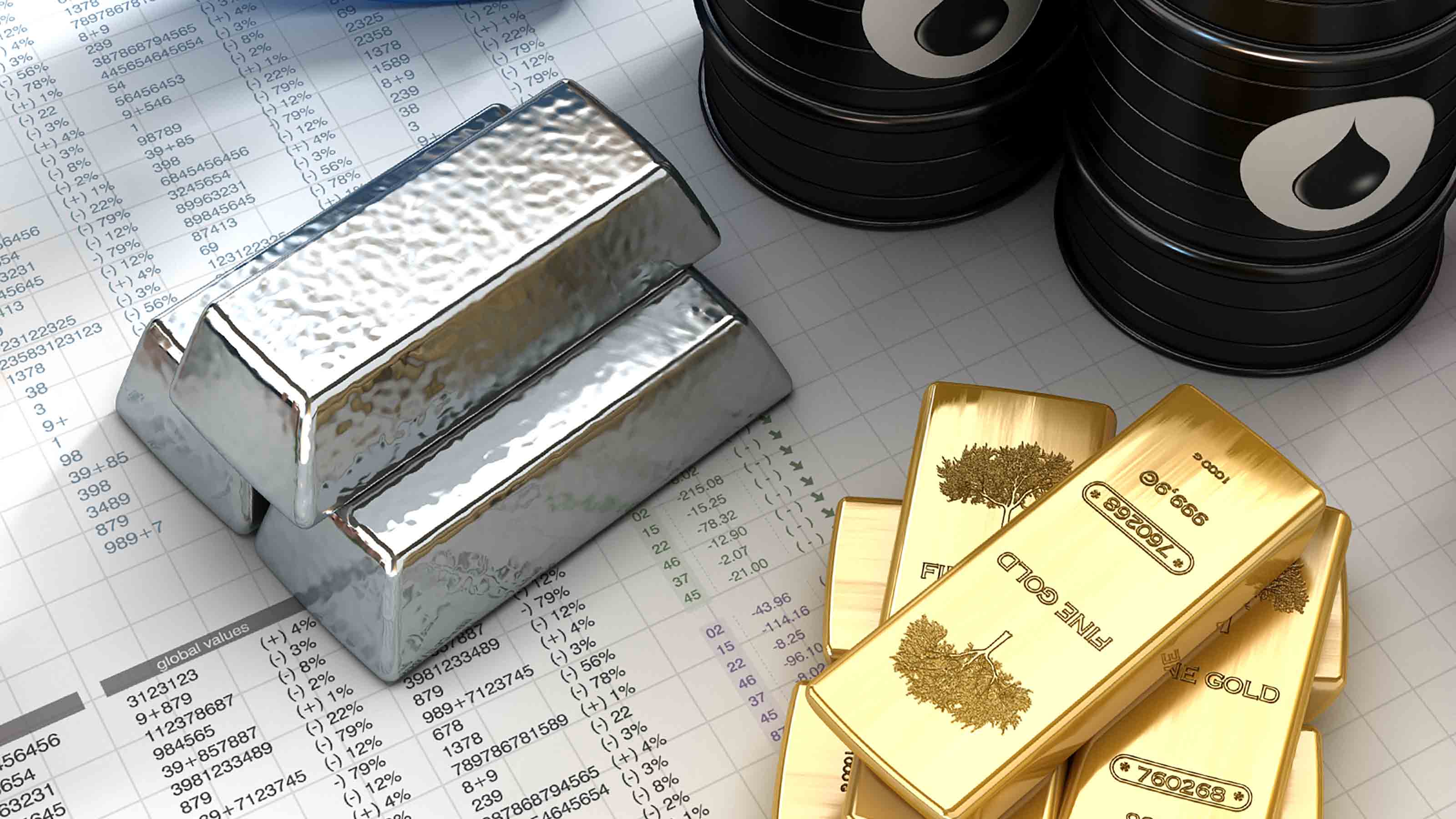
There's a shakiness to the stock market, even as it lingers near record highs. Questions surrounding President Donald Trump's tariffs and their potential impact on already-sticky inflation and the federal funds rate are keeping investors on edge. And this is where commodity ETFs come in.
In times of uncertainty and elevated volatility, many investors turn to hard assets to hedge against possible threats to their portfolios. "As demand for goods and services increases, the price of those goods and services usually rises as well, as do the prices of the commodities used to produce those goods and services," explains Pimco, adding that "commodity prices usually rise when inflation is accelerating."
Commodity exchange-traded products are an attractive way for investors to gain exposure to hard assets like gold, copper, crude oil, sugar, and other goods via futures contracts.
Why should you invest in commodity ETFs?
The idea of engaging directly with commodity markets can be intimidating for investors.
Many online brokers require a separate account or at least separate controls to trade futures, and even if you get over that hurdle, there's always the question of what to buy and sell – and when.
The five commodity ETFs featured here can take some of the guesswork out the equation.
To compile this list of the best ETFs to buy that are focused on this diverse asset class, we looked for funds with assets under management of at least $150 million, with daily trading volume of more than 100,000 shares, and with 100% of holdings in hard assets and/or futures, not equities.
And all five commodity ETFs provide a simple one-stop way to invest in your normal brokerage account.
- Assets under management: $4.7 billion
- Expenses: 0.59%, or $59 annually for every $10,000 invested
The Invesco Optimum Yield Diversified Commodity Strategy No K-1 ETF (PDBC) is the largest commodity-focused ETF out there, and there's good reason for its popularity. This exchange-traded fund provides investors a diversified basket of commodity contracts without the hassle of opening up a futures trading account.
And – as its name indicates – this ETF avoids the dreaded K-1 tax forms that many investors and accountants loathe deciphering and instead adheres to standard capital gains rules.
Fossil fuels lead the portfolio, with gasoline and various crude oil contracts representing almost half of all assets at present. That's in large part because these energy commodities are the most liquid and popular products out there and represent a big chunk of the futures market in general.
But you'll also see sizable holdings in gold, copper, wheat and zinc to round out this reasonably diversified commodity ETF.
Learn more about PDBC at the Invesco provider site.
- Assets under management: $2.5 billion
- Expenses: 1.02%
The first thing you might notice about the First Trust Global Tactical Commodity Strategy Fund (FTGC) is that it charges a much higher rate than your typical index fund.
That’s because the FTGC embraces the word "tactical" in its name, with an actively managed approach that simply takes more work and expense.
For instance, top holdings at the moment include precious metals gold and silver, as well as less-popular agricultural commodities such as sugar and coffee. As a result, FTGC has managed to tally a respectable gain so far this year.
There is no guarantee that this active approach will add up to future outperformance, though. So investors should look carefully at the current approach and market trends given that FTGC is one of the pricier commodity ETFs on this list.
Learn more about FTGC at the First Trust provider site.
- Assets under management: $37.5 billion
- Expenses: 0.25%
Though not the largest gold ETF on Wall Street – that crown belongs to the SPDR Gold Shares (GLD) – this fund from iShares is still among the most liquid and cost-effective ways to gain exposure to the precious metal.
In fact, iShares Gold Trust (IAU) shares all the same benefits of its larger competitor by being 100% linked to gold bullion prices without requiring the costly insurance or storage that comes from owning physical gold bars. This notable difference means IAU undercuts GLD significantly on expenses.
With gold prices soaring, this fund has tacked on an impressive gain of more than 40% in the past 12 months to top even the brisk performance of the S&P 500 Index of large-cap stocks. There are a host of reasons for this, from geopolitical uncertainty to changing policies that could weaken the dollar or potentially boost inflation in the months ahead.
Together, it has made a compelling case for investment in gold. And if you want to play the precious metal directly instead of gold mining stocks, IAU is one of the best commodity ETFs to do that.
Learn more about IAU at the iShares provider site.
- Assets under management: $166.0 million
- Expenses: 1.04%
It's not as flashy as its precious metals peers gold and silver, but copper prices have been glittering just as bright lately. For instance, copper futures pricing hit a nine-month high in February and remains around multi-year highs.
As a result, the United States Copper Index Fund (CPER) has moved from an obscure niche fund into a more popular vehicle for investors who want exposure to this key commodity without trading futures themselves.
This commodity fund is composed of copper futures contracts that mature within the next several months. Fund managers "roll" those futures contracts on a regular basis to ensure the portfolio is always looking ahead to copper's short- and medium-term movement.
This strategy is a bit complex, and it drives up costs as a result. But investors are hard-pressed to find a better commodity ETF to play copper than CPER.
Learn more about CPER at the USCF Investments provider site.
- Assets under management: $1.0 billion
- Expenses: 0.70%
Crude oil is the most actively traded commodity in the world. And if you're looking to play short-term moves in the oil market via an established commodity ETF, the United States Oil Fund (USO) is the leading choice.
USO is focused on the "front-month" contract for West Texas Intermediate crude. It's not a direct, 1-to-1 link to day-to-day fluctuations you'll see in the global oil market because there are other contracts out there such as Brent crude, which is based on output from the North Sea in Europe. But the duration is laser-focused on where futures will go next.
This product is not to be confused with its sister fund, the United States 12 Month Oil Fund LP (USL), which holds futures contracts spread across the next 12 months rather than just the upcoming month. That commodity ETF is an interesting longer-term option in theory, but with less than $100 million in assets, it can be illiquid and carries elevated risks.
That means investors looking to play energy markets via crude oil futures may want to stick with USO, which provides an established near-term investment vehicle that is hard to match outside of direct investment in oil futures.
Learn more about USO at the USCF provider site.







